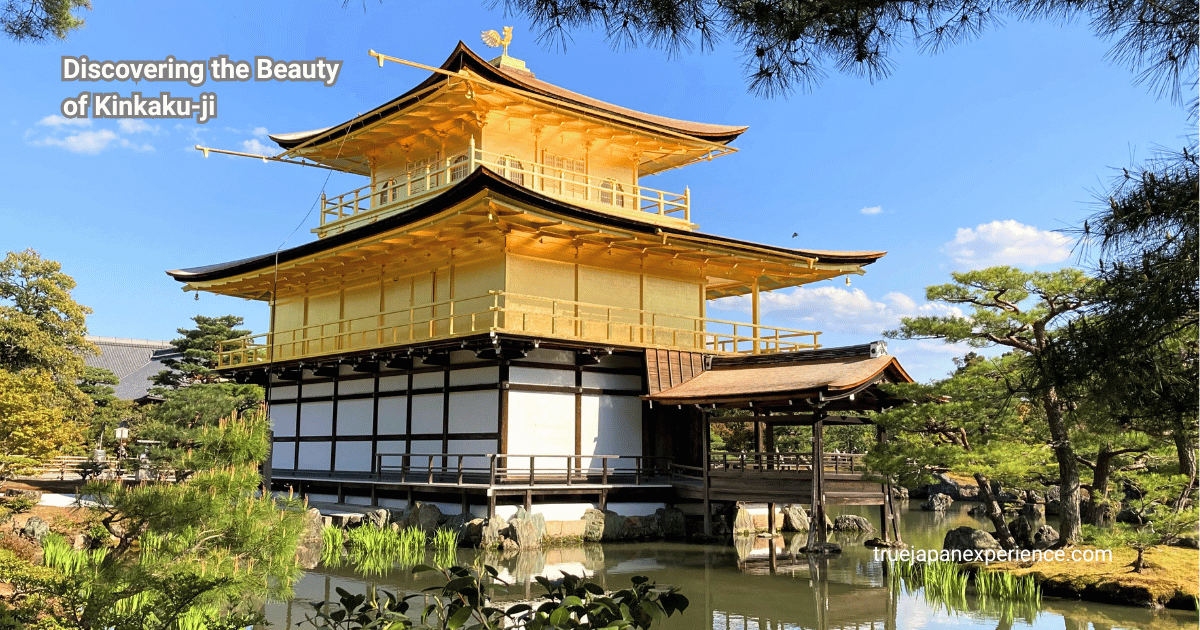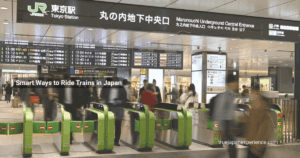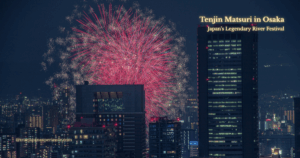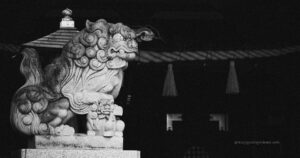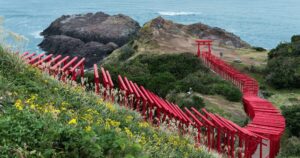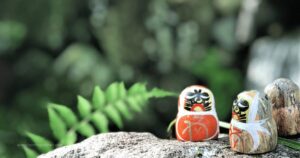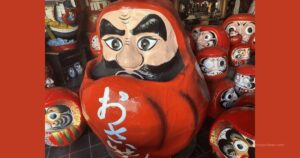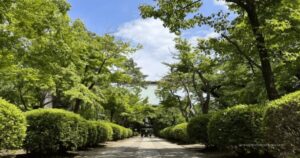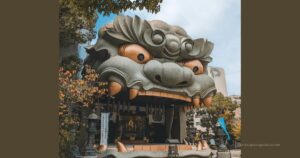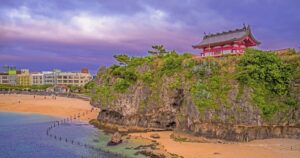Kinkaku-ji, also known as the Golden Pavilion, is one of Kyoto’s most iconic landmarks.
Its dazzling golden reflection over a serene pond creates a breathtaking scene that captivates millions of visitors every year.
But beyond its stunning beauty, Kinkaku-ji holds a deep history rooted in Japan’s cultural and spiritual heritage.
In this guide, we’ll explore the story behind Kinkaku-ji, highlight its must-see features, and share essential tips for planning your visit.
Introduction – Discover the Golden Wonder of Kyoto
When you think of Kyoto, one iconic image often comes to mind: the shimmering golden pavilion of Kinkaku-ji.
Officially known as Rokuon-ji, Kinkaku-ji is one of Kyoto’s most famous landmarks, attracting over 5 million visitors a year from around the world.
While it’s often seen as a dazzling “golden building,” the temple holds a much deeper story of history, art, and cultural significance.
In this guide, we’ll explore everything you need to know about Kinkaku-ji, including its fascinating history, best photo spots, visiting tips, and more.
What Is Kinkaku-ji? Basic Facts You Should Know
Official Name: Rokuon-ji Temple (鹿苑寺)
Founded: 1397
Founder: Ashikaga Yoshimitsu, the third shogun of the Ashikaga shogunate
Religious Affiliation: Zen Buddhism (Rinzai sect, sub-temple of Shokoku-ji)
World Heritage Status: Part of the UNESCO “Historic Monuments of Ancient Kyoto” listing
Kinkaku-ji originally served as a luxurious villa called the “Kitayama Palace” for Ashikaga Yoshimitsu.
After his death, according to his will, the palace was converted into a Zen temple, reflecting his religious devotion.
Today, Kinkaku-ji stands not only as a symbol of Kyoto but also as a testament to the splendor of the Muromachi period.
The Fascinating History of Kinkaku-ji
Before Kinkaku-ji was built, the site was home to a noble estate called Saiho-ji, owned by the powerful Saionji family during the Kamakura period.
Following the decline of the Saionji family, Ashikaga Yoshimitsu acquired the land and built his opulent retreat.
After Yoshimitsu’s death, the villa was converted into a Zen temple and renamed Rokuon-ji, after Yoshimitsu’s posthumous Buddhist name.
Over the centuries, Kinkaku-ji survived wars and political upheavals, but it faced one of its greatest challenges in the modern era.
In 1950, the original pavilion was tragically destroyed by arson, committed by a young novice monk.
The incident shocked the nation and even inspired famous literary works, such as Yukio Mishima’s novel The Temple of the Golden Pavilion.
The present structure was meticulously reconstructed in 1955, based on detailed historical records and photographs.
Despite these hardships, Kinkaku-ji continues to shine brightly, embodying centuries of resilience, beauty, and spiritual depth.
How to Get to Kinkaku-ji – Access Guide
Reaching Kinkaku-ji from Kyoto Station is straightforward.
You can take City Bus No. 101 or No. 205 and get off at the “Kinkakuji-michi” bus stop. From there, it’s about a 5-minute walk to the temple entrance.
Important: Kyoto’s city buses, especially those passing major sightseeing spots like Kinkaku-ji, are often very crowded throughout the year.
For a more comfortable and smooth journey, we recommend using sightseeing buses like K’LOOP or other alternative transport options whenever possible.
Entrance Fee, Opening Hours, and Practical Information
- Admission Fee:
- Adults: 500 yen
- Children (Elementary to Junior High School): 300 yen
- Opening Hours:
- 9:00 AM – 5:00 PM (last admission around 4:30 PM)
- Tickets:
- No advance reservation is needed.
- Tickets are available at the entrance gate.
⚠️ The information above is current as of today, but it may change without notice. Please make sure to check the official website before your visit:
👉 Kinkaku-ji Official Website
Highlights of Kinkaku-ji You Can’t Miss
With its breathtaking architecture and tranquil surroundings, Kinkaku-ji offers more than just a photo opportunity—it’s an immersive journey into Japan’s cultural and spiritual heritage.
From the shimmering Golden Pavilion itself to the carefully curated gardens and symbolic elements, each feature tells a story worth discovering.
The Golden Pavilion – A Fusion of Styles
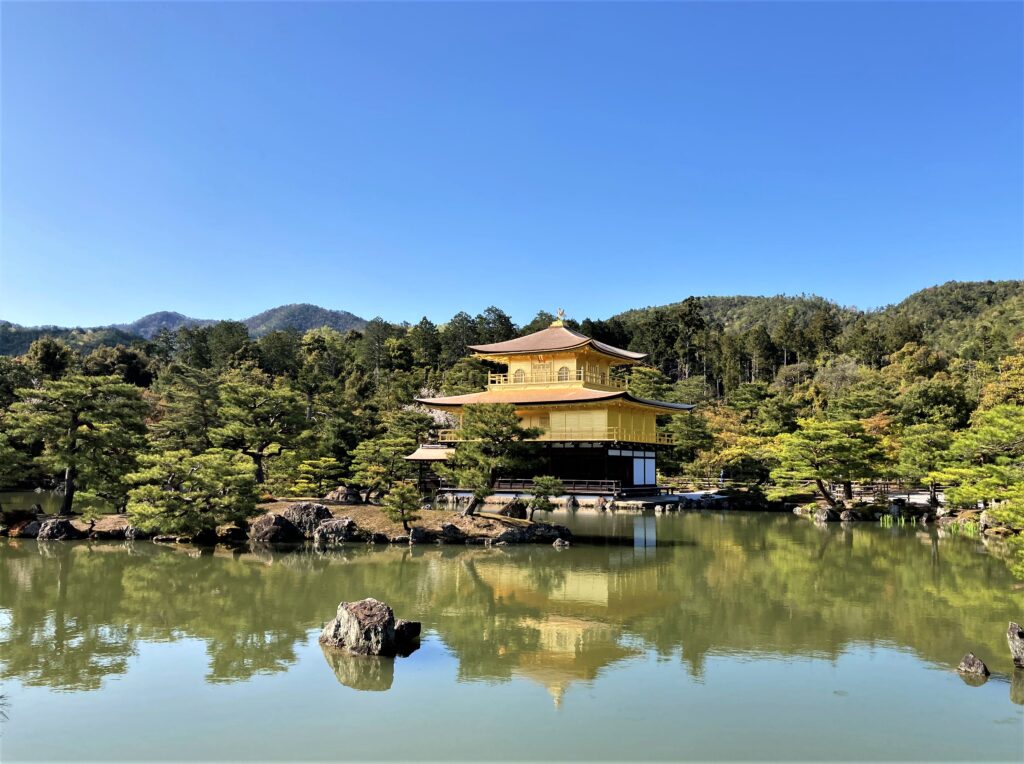
The main highlight of Kinkaku-ji is, of course, the brilliant Golden Pavilion itself.
This three-story building uniquely combines three different architectural styles:
- First Floor: Shinden-zukuri style, traditional for aristocratic residences.
- Second Floor: Buke-zukuri style, used in samurai houses.
- Third Floor: Chinese Zen style, reflecting its religious significance.
The second and third floors are entirely covered in gold leaf, symbolizing the Buddhist concept of paradise.
Around 200,000 gold leaves were used in the restoration!
Although visitors cannot enter the pavilion, the view from outside—especially with its reflection shimmering on the pond—is breathtaking.
Mirror Pond (Kyoko-chi) – Capture the Perfect Reflection
In front of the Golden Pavilion lies the Mirror Pond (Kyoko-chi), which covers most of the garden area.
It’s designed so that no matter where you stand, you can see the reflection of Kinkaku-ji beautifully mirrored on the water.
Don’t miss your chance to photograph the famous “Upside-down Kinkaku-ji” scene!
Gardens and Other Highlights
As you stroll through the grounds, make sure to also explore:
- Hojo (Main Hall): The temple’s central building (not open to the public).
- Sekkatei (Tea House): A beautiful tea house offering views of the Golden Pavilion and Mirror Pond.
- Fudo-do Hall: An important structure that houses a hidden statue of Fudo Myoo, a guardian deity.
- Gingasen Spring and Ryumon-taki Waterfall: Historic spots associated with Yoshimitsu’s lifestyle.
Every corner of the garden reflects the refined aesthetics of the Muromachi period.
Best Time to Visit – Avoiding Crowds and Enjoying the Seasons
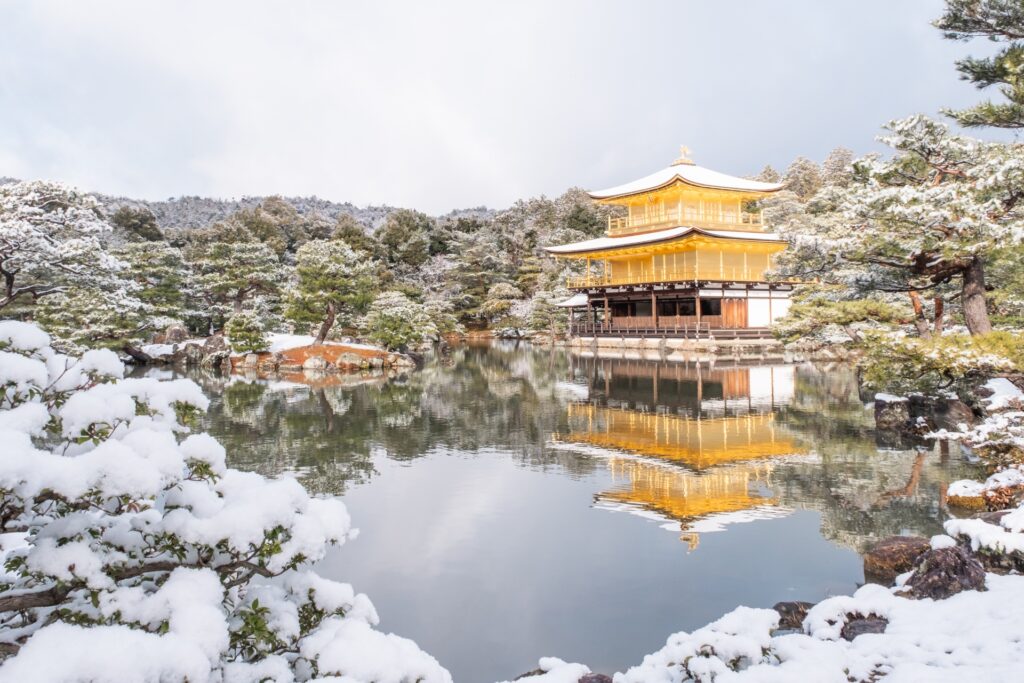
Kinkaku-ji is beautiful year-round, but timing your visit can make a big difference.
- Best Seasons:
- Spring: Cherry blossoms frame the golden pavilion.
- Autumn: The fiery red and orange leaves create a stunning contrast.
- Winter: A rare snow-covered Kinkaku-ji offers a magical scene that’s unforgettable—and makes for stunning photographs.
- Best Time of Day:
- Visit early in the morning (right at opening) or later in the afternoon to avoid large tour groups.
Visitor Services and Facilities
Kinkaku-ji provides basic facilities to ensure a comfortable visit for everyone.
- Language Support:
Pamphlets are available in multiple languages, including English, Chinese, Korean, French, and Spanish.
Most signs around the temple grounds also offer English translations. - Accessibility:
Some parts of the garden paths are wheelchair and stroller accessible, but please note that the area around the Golden Pavilion itself has gravel paths, which might be challenging. - Restrooms:
Restrooms are available near the temple entrance. - Shops:
Souvenir shops inside the temple grounds sell charms, calligraphy scrolls, postcards, and miniature models of Kinkaku-ji. - Food and Drink:
Eating and drinking are not permitted within the temple grounds. However, there are plenty of cafés and restaurants nearby.
FAQs – What Visitors Want to Know Before Going
- Why is Kinkaku-ji covered in gold?
-
The gold leaf symbolizes the Buddhist concept of pure land or paradise. Ashikaga Yoshimitsu, the founder, wanted the pavilion to represent the ultimate expression of wealth and spirituality.
- Can I go inside the Golden Pavilion?
-
Unfortunately, no. Visitors are not allowed to enter the Golden Pavilion itself.
You can view and photograph it from the designated paths around Mirror Pond. - Are guided tours or audio guides available?
-
While Kinkaku-ji does not offer official guided tours, there are English-speaking private tour guides in Kyoto who can include Kinkaku-ji in their itineraries.
No official audio guide is provided on-site. - How long should I plan to stay?
-
Most visitors spend about 30 to 60 minutes at Kinkaku-ji, depending on how much time you spend photographing and strolling through the gardens.
- Can I take photos inside Kinkaku-ji?
-
Photography is allowed throughout the outdoor areas, but please be respectful and avoid blocking pathways when taking pictures.
Tripods are not allow - Is Kinkaku-ji kid-friendly?
-
Yes! The easy walking paths and beautiful scenery make it a great stop for families with children.
Suggested Itineraries – Combine with Other Kyoto Attractions
If you have extra time, Kinkaku-ji pairs well with several other historic sites in the area. Here’s how you can plan your route with realistic travel times:
Ryoan-ji Temple – Famous for its Zen rock garden, this temple is less than 5 minutes by taxi or about a 20-minute walk from Kinkaku-ji.
Ninna-ji Temple – Another UNESCO World Heritage site with a beautiful five-story pagoda. It’s about a 15-minute walk from Ryoan-ji, or 5 minutes by taxi from Kinkaku-ji.
Ginkaku-ji (Silver Pavilion) – Located on the eastern side of Kyoto, Ginkaku-ji is often compared with Kinkaku-ji. However, it’s not within walking distance—it takes about 25 minutes by taxi or car to reach it.
Tip: Kinkaku-ji, Ryoan-ji, and Ninna-ji form a convenient cluster in Kyoto’s northwest area and can easily be visited in half a day. Ginkaku-ji, on the other hand, is better suited for a separate half-day trip or as part of an Eastern Kyoto itinerary.
Souvenirs to Remember Your Visit
At the souvenir shops inside Kinkaku-ji, you can find:
- Miniature Golden Pavilion models
- Good luck charms (omamori)
- Traditional calligraphy goods
- Postcards and art prints
Bringing home a small piece of Kinkaku-ji is a wonderful way to remember your visit!
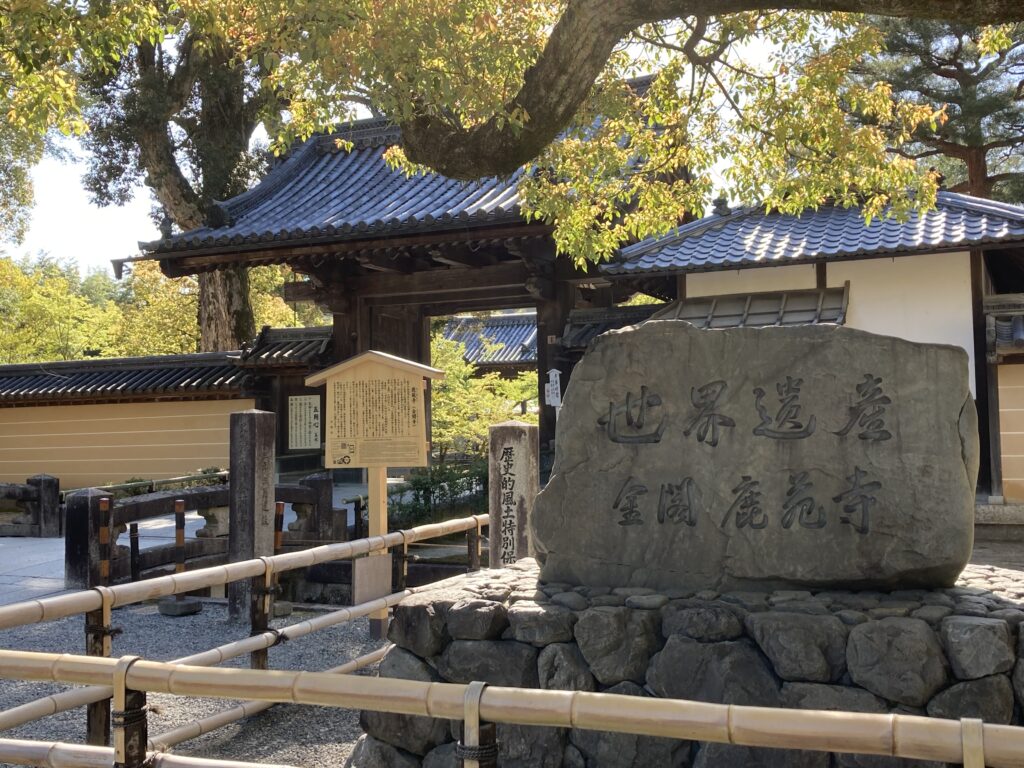
Plan Your Dream Visit to Kinkaku-ji Today!
Whether it’s your first trip to Japan or a return visit to Kyoto, Kinkaku-ji offers an unforgettable experience.
Its golden beauty, historical depth, and peaceful surroundings make it one of the must-see places in Japan.
Plan ahead, travel respectfully, and enjoy every moment at this breathtaking world heritage site!
